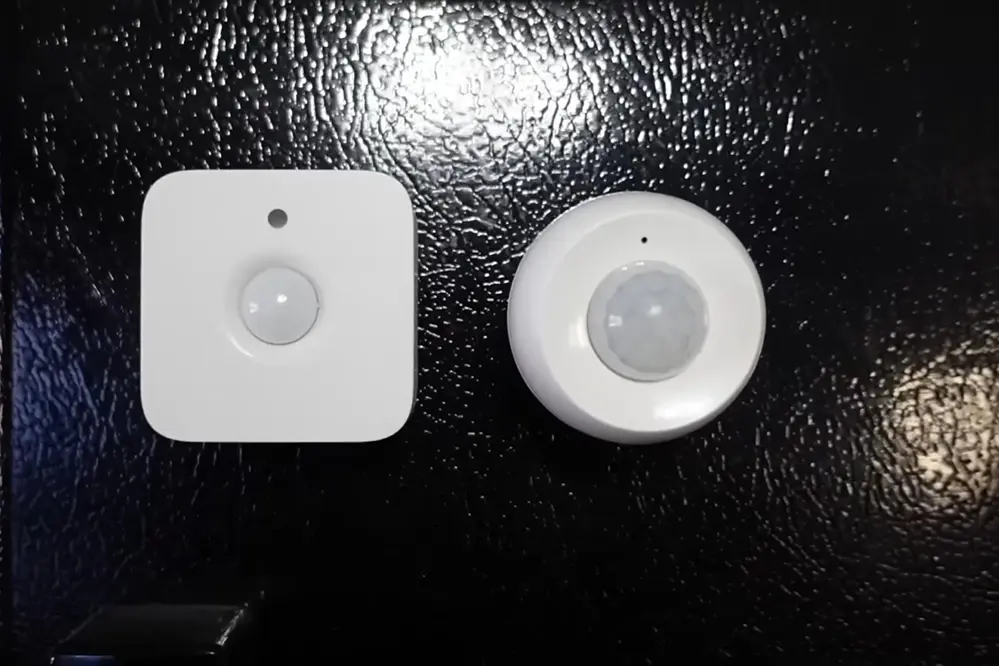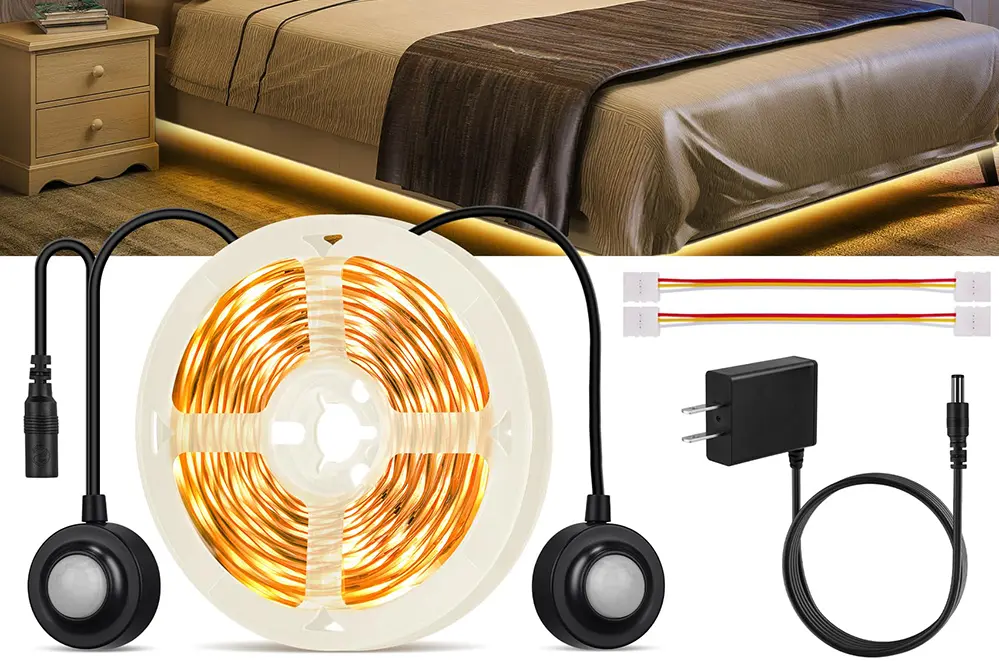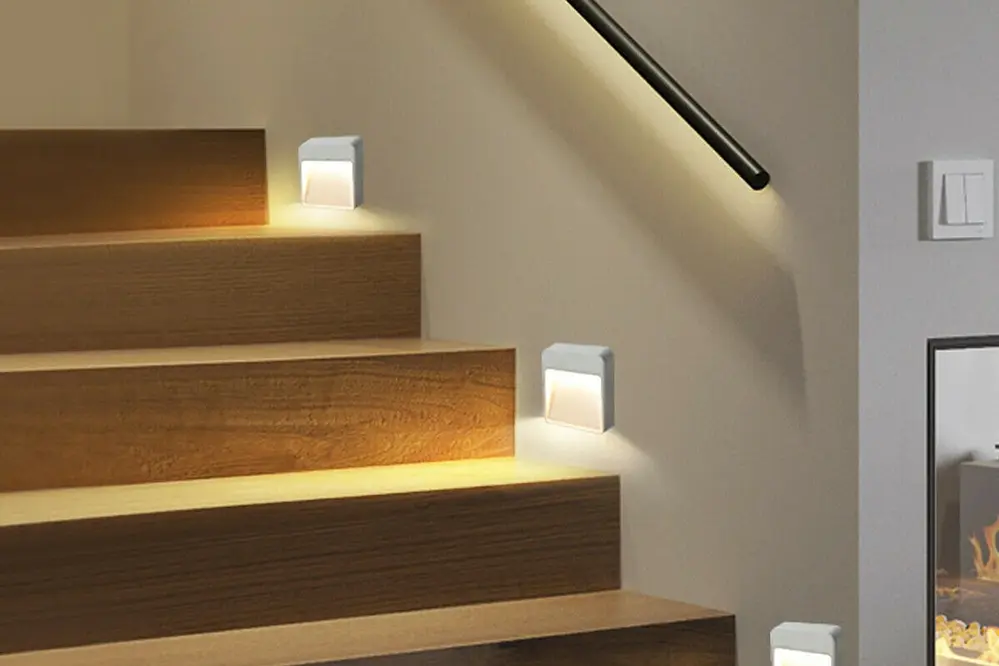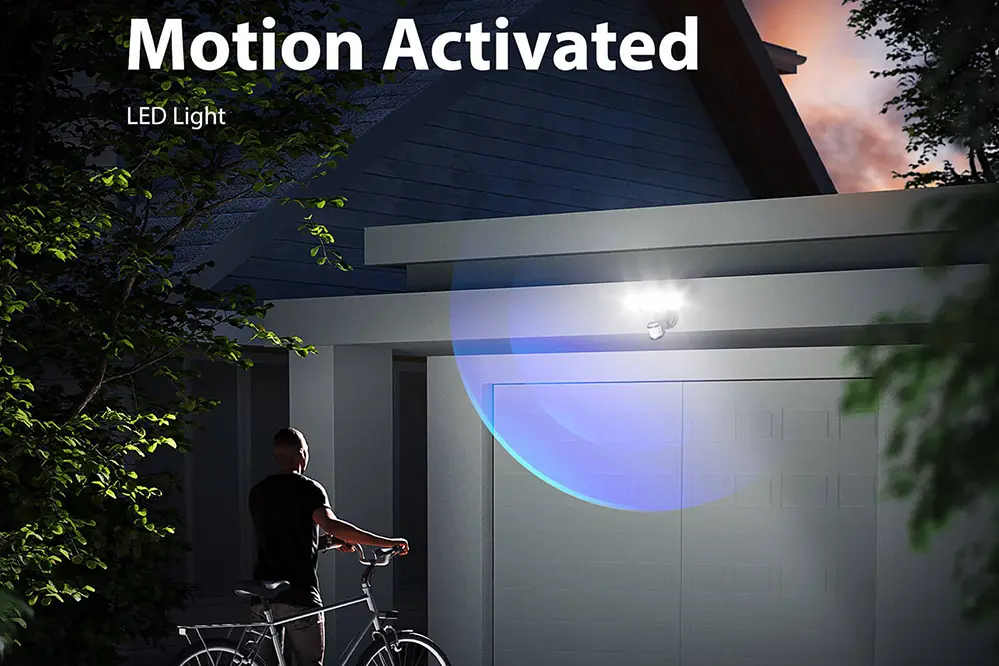Do motion sensors work with LED lights? This question sparks curiosity and challenges common assumptions about modern lighting solutions. Many people struggle with the misconception that LED lights and motion sensors are incompatible, leading to missed opportunities for energy savings and convenience.
In reality, the integration of these technologies offers numerous benefits, including reduced energy consumption and enhanced security. Understanding how motion sensors can seamlessly work with LED lights opens up possibilities for smarter, more efficient homes.
Throughout this article, we will explore the compatibility of motion sensors with LED lights, the advantages they bring, and practical tips for implementation. By the end, you’ll be equipped with the knowledge to make informed decisions about your lighting setup. Dive into this enlightening journey and discover how to optimize your home with cutting-edge technology.
Understanding Motion Sensors

Motion sensors are innovative devices that detect physical movement in a given area, triggering a specific response.
Introduced in recent years, modern sensors, a marvel blending advanced technology, flawlessly detect human presence. They activate when someone enters a room, ensuring lighting efficiency and user convenience without manual intervention.
Motion sensors use infrared, ultrasonic, or microwave signals to identify movement. Infrared sensors, for instance, detect body heat, converting energy fluctuations into electrical signals that activate lighting systems.
The integration of LED lights and motion sensors is not just a possibility; it’s the future of efficient lighting. These systems minimize energy waste, enhance security, and require minimal maintenance.
Embracing this technology assures a bright, sustainable future while optimizing functionality and user experience.
What Are LED Lights?
LED lights, or Light Emitting Diodes, are a pinnacle of modern illumination technology, revolutionizing how we light up spaces.
These lights use semiconductor devices that emit light when an electric current passes through them.
The evolution of LED lighting has ushered in remarkable innovations, offering an array of benefits such as significantly lower energy consumption and an impressive lifespan, providing efficiency that is unmatched, environmentally friendly, and instrumental in reducing carbon footprints.
The significance of LED lights extends far beyond their role as a substitute for older lighting technologies. By converting most of the energy into light with minimal heat production, they serve as a catalyst in transforming light practices, embodying our commitment to sustainability, modern engineering, and a brighter, more efficient tomorrow.
Compatibility of Motion Sensors with LED
Integrating motion sensors with LED lighting solutions is not just feasible, but rather, a transformative synergy that enhances the adaptability and efficiency of lighting systems, offering an exceptional user experience.
Many compatibility concerns about the integration of motion sensors with LEDs are more myth than reality.
Indeed, choosing compatible motion sensors that match the specifications and power ratings of LED systems is crucial.
Certain sensors avoid flickering and ghosting, phenomena often associated with mismatched sensor and LED configurations.
This alignment empowers residential and commercial spaces to optimize energy usage, leveraging sensors that intuitively manage light activation with real-time motion detection.
Ultimately, the integration of motion sensors and LEDs is confidentially transforming spaces into smart, responsive environments. With technological advancements, future innovations will further refine this seamless pairing.
Key Features of Motion Sensors
Motion sensors epitomize cutting-edge technological innovation, boasting core capabilities that redefine our interaction with lighting. One standout characteristic is their ability to precisely detect movement, enabling a highly tailored and efficient lighting experience that aligns with user needs.
In addition to their primary function of detecting motion, many sensors offer “adaptive sensitivity”. This means they are adjustable to a variety of environments, providing consistent performance across different scenarios. On top of this, the incorporation of time delay features ensures that lights remain on only when necessary, adding another layer of energy efficiency. These key features collectively empower users to cultivate intelligent lighting systems that are both resourceful and intuitive.
Sensor Types
To optimize your LED lighting system, understand the different types of motion sensors available, as each offers unique advantages for various applications.
Infrared sensors detect body heat and are excellent for low-light environments and energy conservation.
Passive Infrared (PIR) sensors provide efficient detection by recognizing changes in infrared radiation. They are energy-efficient and particularly useful for indoor environments where ambient lighting fluctuates minimally.
Ultrasonic sensors emit sound waves to detect motion in a specified area, making them ideal for spaces where line-of-sight detection is impaired. These sensors excel in detecting minor movements, ensuring no motion goes unnoticed.
Detection Range
The effectiveness of motion sensors is significantly influenced by their detection range, impacting their suitability for different applications.
- PIR Sensors: Typically offer a detection range of 10 to 25 feet, ideal for rooms and entranceways.
- Ultrasonic Sensors: Can detect movement from 20 to 30 feet away, suitable for larger areas.
- Microwave Sensors: Have an impressive range up to 30 to 50 feet, perfect for spacious and open environments.
Choose a sensor with a range that fits your specific needs to maximize effectiveness. Remember that obstacles may reduce the stated range of each sensor.
Selecting the right sensor can greatly enhance the performance of LED lights, turning them into a beacon of efficiency and innovation.
Benefits of Using Motion Sensors with LED Lights
Incorporating motion sensors with LED lights ushers in a new era of efficiency and convenience, revolutionizing how we illuminate spaces.
Primarily, the seamless integration of motion sensors into a lighting system fosters energy savings, minimizing wastage by ensuring lights operate only when needed. This translates into tangible reductions in utility bills, underscoring the practical benefits of modern technology. Additionally, this setup reduces the frequency of bulb replacements, further enhancing cost savings over time.
Environmentally, this fusion results in a compelling contribution to energy conservation. By relying on motion sensors, spaces are only illuminated when occupied, significantly reducing unnecessary energy consumption and ensuring a more sustainable usage cycle.
Moreover, combining these technologies leads to enhanced security features that deter intruders by unexpectedly activating lights. This proactive approach provides peace of mind and reinforces the safety of both residential and commercial properties. The strategic deployment of motion-activated LED lights has become synonymous with intelligent living, cultivating an environment of safety, energy efficiency, and futuristic adaptability.
Common Compatibility Issues
When integrating motion sensors with LED lights, certain compatibility issues may arise, affecting optimal performance.
Firstly, it’s crucial to acknowledge that not all motion sensors are designed to work seamlessly with LEDs, especially under a minimum load. Older models, in particular, may not support the lower wattage requirements of LED systems, leading to erratic functioning or frequent flickering. This could compromise the efficiency and expected lifespan of both systems, consequently undermining energy-saving benefits.
Furthermore, those residing in regions with a specific frequency of power supply may face challenges. At times, the sensors may not appropriately sense the reduced current drawn by LEDs, causing them to either fail to activate or stay perpetually on. For this reason, ensuring the use of modern, LED-compatible motion sensors is paramount.
Additionally, as technology advances, there are increasingly sophisticated solutions designed to bridge these gaps. By investing in high-quality motion sensors specifically made to function with LEDs, one can achieve the dependable performance and energy efficiency envisioned. This strategic investment not only maximizes the benefits of integrating motion-sensitive lighting but also fosters a harmonious, sustainable living standard that embraces future technological landscapes.
How to Choose the Right Motion Sensor for LED

Choosing the right motion sensor is pivotal for LEDs, so do motion sensors work with LED lights effectively?
First and foremost, ensure the sensor is compatible with LED lights. In recent years, many manufacturers have solved the pulse-modulation frequency issue present with LEDs, so opt for sensors explicitly mentioning LED compatibility and capable of supporting a minimum load to prevent malfunctioning. Delve into the details of motion detection to guarantee your choice accommodates your specific requirements.
Compatibility ensures functionality and avoids flickering problems.
Consider where the sensor will be used – indoor or outdoor – as this can affect the necessary durability and resistance to environmental factors. Also, evaluate advanced features like multiple detection patterns or customizable settings to adapt to different spaces seamlessly.
Incorporating the latest advancements in motion-sensing technology ensures optimal performance for your LED lighting system, spotlighting your investment’s sustainability and energy efficiency. Embrace this future-forward approach to lighting that harmonizes seamlessly with the modern landscape, reflecting the latest years innovations and beyond. With careful selection, unlocking the synergy between LED lights and motion sensors is within reach, fueling a brighter, greener tomorrow.
Installation Tips for Motion Sensors with LED
Prioritize precise placement, a cornerstone of maximizing operational efficacy. Select areas with minimal obstacles to ensure the sensor’s field of view remains unobstructed, facilitating accurate motion detection. Consider mounting on walls or ceilings to optimize coverage and minimize potential blind spots.
In addition to positioning, calibration plays a pivotal role. Make use of “sensitivity settings.” This is not just a matter of turning knobs; ensuring alignment with your environment is key to maximizing performance. With the sensor calibrated to the exact requirements of your LED lighting setup, you can enjoy the brilliance of a well-lit space with undisturbed functionality. Aim for precision, firmer in your ability to harness the power of LED innovations seamlessly integrated with motion-sensing technology.
Tools Required
To successfully install motion sensors with LED lights, gather a set of essential tools to ensure a comprehensive setup.
Firstly, a reliable screwdriver set is indispensable for mounting components securely. Ensure you have both flathead and Phillips types for versatility. Including a voltage tester in your toolkit is crucial, as it helps confirm that electrical circuits are inactive before installation.
Additionally, a pair of wire strippers makes handling electrical cables more efficient, streamlining connection processes significantly. For measuring tasks, a tape measure ensures precise placement of sensors, enhancing their operational effectiveness. Secure your wires with electrical tape, which not only insulates but also organizes them neatly.
A step ladder stands as your sturdy partner, offering access to elevated installation points. With overall safety in mind, do not forget protective gear, such as gloves and safety goggles. These items add an extra layer of security during your installation endeavor.
Compile your tools carefully, and approach your task with the assurance that a well-prepared toolkit dramatically elevates installation success.
Step-by-Step Guide
Embarking on this journey, let’s unravel the seamless integration of motion sensors with LED lights, transforming spaces into perceptibly smarter environments.
To begin, gather the essentials: your LED lights, accompanying motion sensor, and the toolkit meticulously compiled in the previous section. It’s important that all components are compatible to ensure a successful installation.
Next, power should be turned off for your safety. Use your voltage tester from your toolkit to verify that the circuit is inactive. This preventive step ensures a hazard-free working environment.
Now, focus on the wiring. Connect the motion sensor’s wires to corresponding LED light wires using your wire strippers and electrical tape. Follow the manufacturer’s instructions closely for best results.
Finally, test the installation by restoring power. Adjust sensor settings according to sensitivity preferences, ensuring optimal performance and energy efficiency.
Troubleshooting Motion Sensor and LED Issues
Encountering unexpected glitches is a common part of any technological endeavor, but fear not. Carefully diagnosing these issues will not only resolve them but also empower you with a deeper understanding of how motion sensors and LED lights collaborate, turning obstacles into learning opportunities.
If your lights remain on continuously or fail to activate, consider the “forever on” glitch. This may be the result of a misconfigured sensor or an incorrect installation. To address this, meticulously review the settings of your motion sensor, ensuring the timer is appropriately adjusted. Moreover, verify that the sensor is not obstructed or positioned improperly, as these factors can hinder its function.
Flickering Problems
In the realm of seamless illumination, flickering can sometimes manifest as a disconcerting shadow. It disrupts the illusion of a smooth, continuous lighting experience, signaling a potential electrical inconsistency that requires attention.
Flickering issues often stem from incompatibility between motion sensors and LED circuits.
Occasionally, older motion sensors may create these challenges, especially when designed for incandescent bulbs.
LED lights, with their lower power requirements, sometimes cause fluctuations in the current flow, which can lead to flickering.
To improve this, consider replacing older sensors with those specifically designed for LED technology. Additionally, ensure wiring is meticulously checked to prevent voltage drop or fluctuations that can trigger flickering.
Ultimately, the goal is to ensure your lighting’s brilliance isn’t marred by inconsistency. With strategic interventions, these issues can often be resolved seamlessly, ensuring a stable and inspiring lighting environment.
Sensor Misactivation
Sensor misactivation occurs when motion sensors erroneously respond to stimuli that are not genuine movement, causing unintended reactions.
In recent years, research emerged, revealing an intriguing correlation: sensors sometimes react to ambient light changes similar to actual movement. The introduction of LED lighting—known for its rapid modulation capability—made these false triggers somewhat more frequent.
But, it’s not just about the light itself. Reflective surfaces can exacerbate sensor systems’ misactivation by deflecting the light waves, thereby misleading the motion detectors. Additionally, electromagnetic interference from other nearby appliances can also confuse their function.
Fortunately, the solution is readily available. Investing in high-quality, calibrated motion sensors designed for LED environments is crucial. They often include advanced sensitivity settings, allowing precise discrimination between authentic motion and environmental changes.
This adjustment can bring instantaneous relief, significantly enhancing your lighting experience reliability and accuracy.
Real-Life Applications of Motion Sensors with LED Lights

Integrating motion sensors with LED lights has revolutionized energy conservation, convenience, and security in multiple facets of modern life.
One notable application is in smart home systems, where they illuminate pathways and rooms only when needed. This technology not only conserves electricity but also enhances user experience by offering hands-free control.
In commercial spaces, these systems contribute to significant energy savings and operational efficiency. For example, warehouses and office buildings utilize motion sensors to light areas temporarily occupied, reducing unnecessary power consumption dramatically.
Beyond energy savings, motion sensors with LED lights play a pivotal role in security settings. They deter unwanted intrusions by ensuring areas are only lit when movement is detected, serving as a proactive security measure.
This innovative approach exemplifies the synergy between cutting-edge technology and everyday utility.
Future Trends in Motion Sensor Technology
As technology progresses, the intersection of motion sensors and LED lights promises even greater innovations. What might we expect from this evolving field?
In the last year, industry specialists anticipate the integration of AI-powered motion sensors, capable of distinguishing humans from pets and fluttering leaves. This advancement stands to enhance accuracy, fostering smarter lighting solutions.
Moreover, there’s buzz around motion sensors harnessing machine learning to predict user behavior patterns. Such predictive capabilities would customize lighting settings, thus optimizing energy efficiency and user comfort in unprecedented ways.
Sustainability considers continue to drive the industry, pointing towards sensors that operate on minimal energy or are even solar-powered. These developments will ensure that motion-sensing technologies remain environmentally conscious and economically viable.
In future trends, the promise of more refined and responsive motion-sensor technology shines brightly. The horizon is indeed filled with illuminating possibilities.
Common Misconceptions About Motion Sensors and LEDs
Many hold the belief that motion sensors and LED lights are incompatible, but this notion stems from outdated information.
Another misconception is that motion sensors cannot adjust to the low wattage of LEDs.
Contrary to this, advancements in motion sensor technology have made them highly adaptable to a variety of LED lighting systems, ensuring seamless integration and efficiency, reducing energy wastage, and maximizing performance.
Moreover, some users mistakenly assume that flickering lights are a sign of incompatibility. In most cases, flickering is due to improper settings or the use of non-compatible components, not a fundamental flaw. By selecting the right motion sensors and LEDs, and ensuring correct installation, users can enjoy smooth and reliable operation. This thoughtful approach underscores the potential of marrying motion sensors with the brilliance of LED lighting.
FAQs About Motion Sensors and LED Integration
Do you need a special light bulb for motion sensor?
Choosing the right light bulb for a motion sensor might seem daunting, but the reality is refreshingly simple. Most motion sensors are compatible with a variety of light bulbs, including incandescent, CFL, and LED.
However, LED lights perform better due to energy efficiency and longer lifespan.
They provide extensive flexibility, enabling seamless integration with motion sensors for an enriching user experience. It’s important to consider the wattage and voltage specifications provided by the manufacturer, ensuring the components you choose work harmoniously.
Despite the absence of a requirement for specialized light bulbs, selecting bulbs with enhanced features can significantly elevate efficiency and user satisfaction. Such features might include dimming capabilities or compatibility with various smart home systems. By focusing on these criteria, you’re poised to create a lighting system that not only saves energy but also provides convenience, security, and adaptability to your unique environment. Embrace innovation and relish the abundance of possibilities that modern lighting technologies present.
How do motion sensor LED light bulbs work?
Elegant configurations merge to create a symbiotic relationship between motion sensors and LED light bulbs, ushering in a new age of illumination. These smart bulbs harness the power of integrated motion detection technology that senses nearby movement, activating the bulb when it detects a presence. This technological marvel is a union of precision engineering and innovative design.
Motion detection is typically facilitated by passive infrared sensors (PIR) or microwave sensors, both of which capitalize on changes in environmental dynamics. PIR sensors are adept at detecting body heat through infrared radiation, activating the LED light when a warm body comes within their field of vision. Conversely, microwave sensors emit waves that can detect motion by measuring changes in the wave reflections, allowing for motion detection even through thin walls or glass.
Innovatively, these motion sensor LED bulbs possess a keen ability to contribute to energy efficiency. By illuminating only when necessary, they reduce unnecessary energy consumption, thus lowering electricity costs and promoting sustainability. This ability makes them an invaluable asset in areas like hallways, driveways, and other spaces where light is needed only sporadically.
The robust functionalities of motion sensor LED light bulbs do more than revolutionize lighting—they elevate it. By offering customizable settings, these bulbs can adjust the sensitivity of the motion sensor and the time duration for which they remain lit. Such flexibility ensures that the lighting is not only smart but personal, adapting effortlessly to the unique needs of its environment. An investment in these systems is a nod to the future, empowering users to not only illuminate their surroundings but enhance life quality through cutting-edge, energy-conscious solutions.
Can you use an LED as a light sensor?
Harnessing the multifaceted capabilities of LEDs, researchers have discovered their potential beyond conventional lighting. Interestingly, LEDs can serve as highly effective light sensors, opening new avenues for innovation. This approach leverages their intrinsic properties, showcasing their versatility.
When you think of LEDs, light emission is what comes to mind. However, by reversing their typical electrical flow, they transform into light-sensitive devices.
This fascinating dual role of LEDs is rooted in their semiconductor construction, making them responsive to external light stimuli. By detecting variations in light intensity, LEDs can contribute to precise measurements and feedback systems.
The adoption of LEDs as light sensors marks a dynamic shift in technology, providing a cost-effective and efficient alternative to traditional photodiodes. As LED technology continues to advance, its potential applications, from smart home systems to environmental monitoring, appear boundless and invigorating. This innovation has led to breakthroughs in real-time data analysis, further integrating LEDs into the fabric of modern tech solutions.
How do motion sensors interact with LEDs?
With the advent of LED lights as a centerpiece in modern lighting, we unlock an era of efficiency and brilliance that challenges conventional lighting paradigms. Motion sensors, known for their intuitive ability to detect movement, herald a revolution by synchronizing perfectly with LED technology. This synergy opens doors to enhanced energy conservation, innovative design solutions, and a commitment to sustainable living that inspires forward-thinking ingenuity.
As the world pivots toward sustainable solutions, LEDs and motion sensors form a symbiotic partnership that defines the future.
In essence, motion sensors detect changes in the environment, typically through infrared waves, to control lighting functions. When integrated with LEDs, the combination produces an intelligent lighting system.
This sophisticated interaction ensures that lights are activated only when necessary, optimizing energy consumption. Vibrant and efficient, LEDs complement the smart responsiveness of motion sensors beautifully.
Such integration is not only a stepping stone toward reduced energy costs but also a pathway to minimizing our carbon footprint. With LED lights adjusting to the presence of movement, households and businesses stand poised to conserve energy efficiently, showcasing a commitment to environmental stewardship.
Thus, the question of whether motion sensors and LEDs harmonize is emphatically answered: they do, and the potential benefits extend well beyond mere compatibility. Relish the confidence that comes with employing cutting-edge lighting solutions that effortlessly adapt to your needs while embodying a vision for a sustainable future.
Do LED lights affect motion sensor accuracy?
Addressing the impact of LED lights on motion sensor accuracy reveals opportunities to optimize smart lighting systems. Motion sensors utilize passive infrared (PIR) technology, which detects changes in infrared radiation, such as those caused by human movement, rather than light levels. This characteristic ensures that LED lights, known for their energy efficiency and different heat signatures compared to incandescent bulbs, do not interfere with the sensor’s core functionality.
To enhance sensor accuracy in environments utilizing LEDs, it is essential to consider appropriate sensor placement and sensitivity adjustments. While LEDs themselves do not affect PIR sensors directly, reflective surfaces can cause challenges. Properly positioning the sensor to minimize reflections can maintain its performance, ensuring reliable motion detection and system functionality.
Further advancements in LEDs have resulted in longer wavelengths, lessening the risk of interference with the sensor’s infrared detection. This improvement bolsters the dependability of LED-illuminated motion sensor systems and contributes to creating more intelligent and energy-efficient lighting environments. As technology progresses, many motion sensors are now designed to harmonize effectively with LED lighting, promising seamless integration and enhanced user experience.
In conclusion, mindful installation and regular maintenance can ensure optimal sensor performance when LEDs are involved. Applied thoughtfully, LED-matched sensors equate to sustainable, accurate lighting solutions. These innovations guide us closer to a future where refined technology molds both functionality and energy conservation, maximizing the benefits and reliability of motion-detecting systems paired with modern LED illumination.
Conclusion
Motion sensors effectively integrate with LED lights, driven by technological advancements that enhance their compatibility and efficiency. This union exemplifies how modern innovations empower sustainable solutions, contributing to a more energy-conscious future.
The combination of motion sensors and LED lighting significantly aids in reducing carbon footprints. By embracing these systems, we unlock possibilities that blend sustainability with state-of-the-art technology, showcasing the potential for impactful environmental progress.
This evolution in lighting is not just about efficiency; it’s a testament to the progress achievable when innovative technology meets everyday utility. As LED-integrated motion sensors illuminate our path forward, they highlight the bright future of sustainable innovation.





